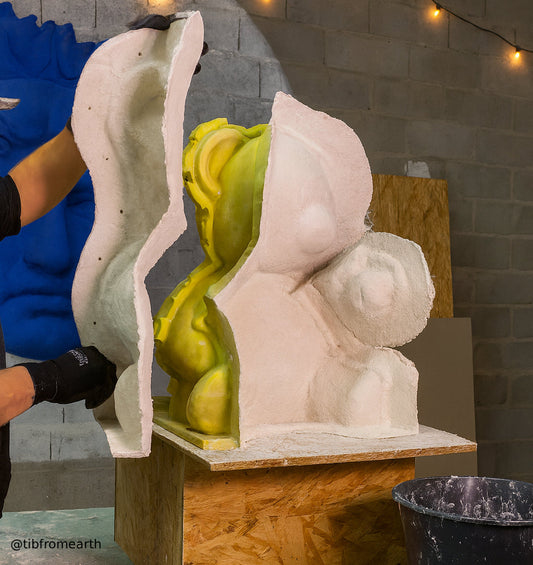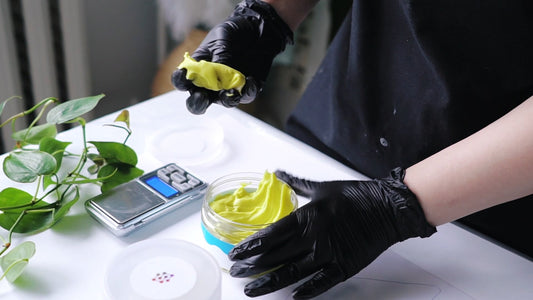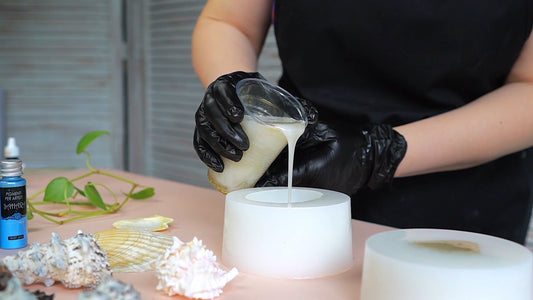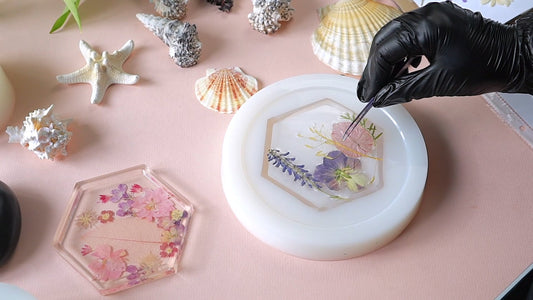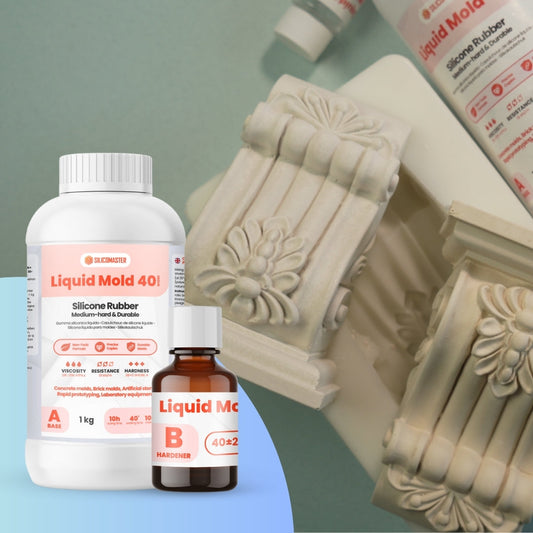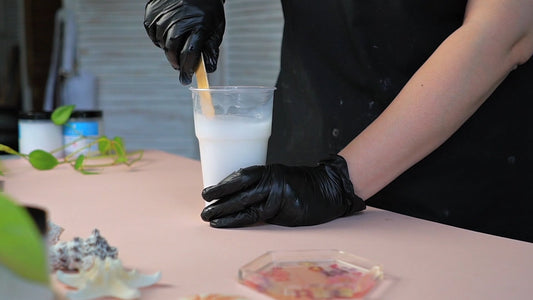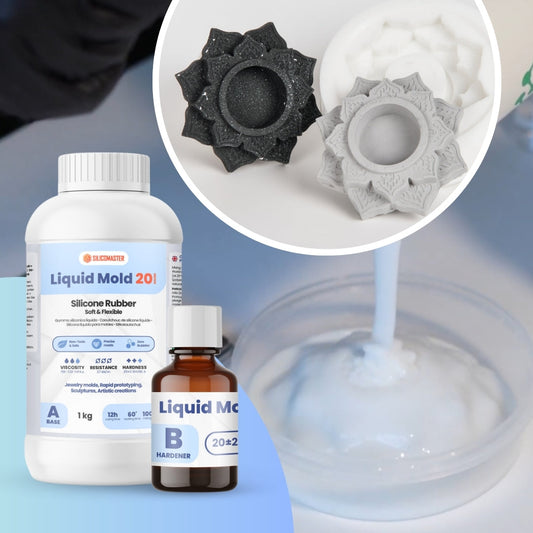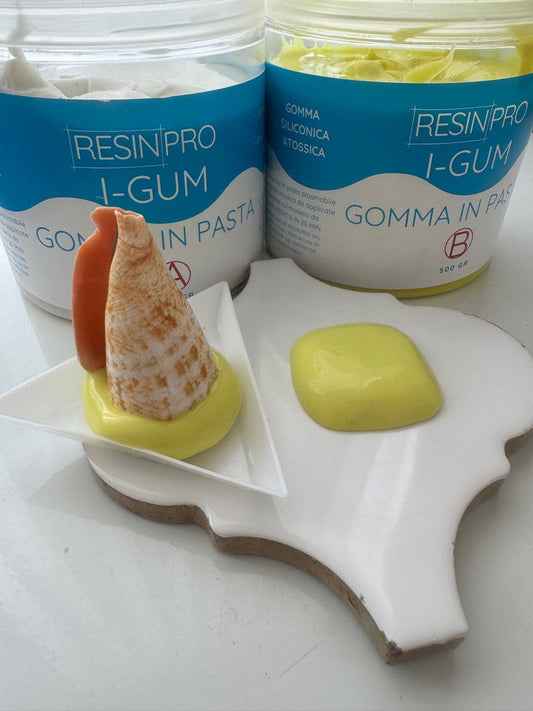How to Take Care of Silicone Moulds to Make Them Last Longer (Without Losing Your Mind in the Process)
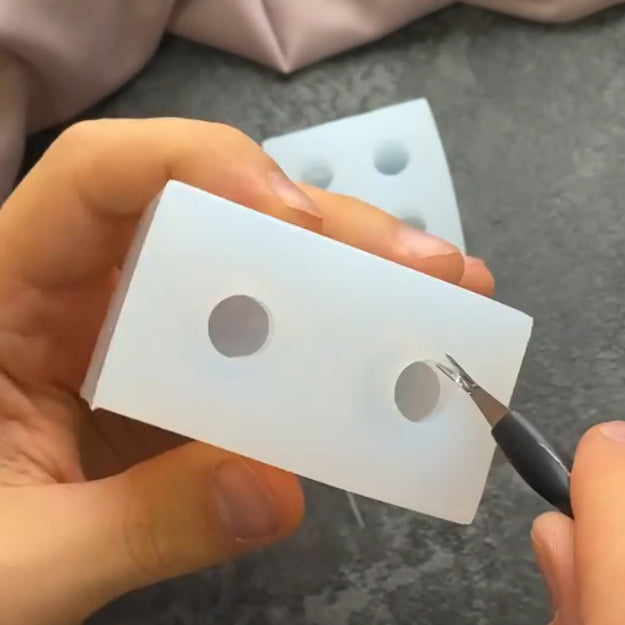
I remember the first time I broke one of my favourite moulds: it was one I used for making jewellery with encapsulated petals. I was in a rush, pulled too hard… crack. A tear along the side—and goodbye, mould.
Since that day, I’ve learned that taking care of silicone moulds is essential if you want them to last and avoid nasty surprises.
🧼 How to Demould Without Damaging
One of the most common mistakes is rushing the demoulding process, thinking that “faster = better”.
But the real secret is patience and gentle movement.
If your mould fits like a sock, twist it gently while slowly pulling.
💡 This trick has saved me countless moulds in the workshop!
🧽 Tips for Cleaning Silicone Moulds Properly
Cleaning your mould after every use is crucial.
Use lukewarm water and mild soap. Avoid abrasive sponges, alcohol, or harsh cleaners—they can dry out and damage the silicone surface.

Liquid Mold 5 - Silicone for Ultra-Soft Moulds and Fine Details

Liquid Mold 20 - Universal Silicone for Crafting and Sculptures

Liquid Mold 30 - Silicone for Durable Moulds and Heavy Materials
📦 How to Store Silicone Moulds
Don’t bend them, don’t stack them, and keep them away from dust and heat.
If you need to stack them, place tissue paper between each mould.
The ideal solution? Store them flat in a dry, dust-free place.
🔒 What to Do to Make Them Last Longer
Use compatible materials and make sure the resin is fully cured before demoulding.
Even a small mistake can cause stains or tears.
The one detail that makes the difference? Patience.
⚠️ Why Moulds Get Damaged (and How to Prevent It)
The most common causes include:
-
Rushing or pulling too hard during demoulding
-
Using abrasive products
-
Improper storage (folded or under weight)
-
Exposure to heat or harsh chemicals
👉 Knowing these risks is the first step to protecting your investment.
🧪 How to Prevent Resin from Damaging the Mould
-
Always wait for the resin to fully cure before demoulding
-
Use moulds compatible with epoxy resin
-
Clean your mould after each use to avoid buildup or residue

Pure Mold 10 - Silicone for Crafting and Fine Details

Pure Mold 20 - Universal Silicone for Crafting and Sculptures

Pure Mold 30 – Ideal Silicone for Moulds in Cement, Plaster, Mortar, and Decorative Stones
🧴 What Soap Should You Use to Clean Silicone Moulds?
Choose a neutral, fragrance-free soap, with no added chemicals.
Avoid degreasers or strong detergents — they can damage silicone over time.
✅ 5 Steps to Take Care of Silicone Moulds (for Epoxy Resin)
-
Demould gently and patiently
-
Wash with lukewarm water and neutral soap
-
Store in a dry place, never folded
-
Only demould when resin is fully cured
-
Avoid harsh cleaners or solvents
💡 Take Care of Them Today — They’ll Thank You Tomorrow
Did you already know this? If not — now you do 😉
A well-maintained mould can last for years.
A neglected one… just a few uses.
Save this guide and share it with anyone struggling to keep their moulds in good shape!
And you? Have you ever broken one at the worst possible moment?
❓ Frequently Asked Questions
How do I clean silicone moulds?
👉 Wash with lukewarm water and neutral soap. Avoid alcohol or abrasives. Demould slowly. Store away from heat and dust.
How can I make them last longer?
👉 Don’t bend or stack them. Clean them properly. Only demould once resin is fully cured. Use compatible materials.
How should I store them?
👉 In a dry place, without weight on top. If stacking, separate with tissue paper.
How do I take care of silicone figurines?
👉 Wash with lukewarm water and gentle soap. Avoid direct sunlight and heat. Store clean and protected from dust.

